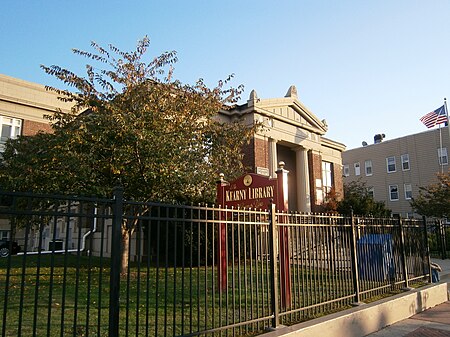Kearny, New Jersey

Kearny ( KAR-nee) is a town in the western part of Hudson County, in the U.S. state of New Jersey, and a suburb of Newark. As of the 2020 United States census, the town's population was 41,999, an increase of 1,315 (+3.2%) from the 2010 census count of 40,684, which in turn reflected an increase of 171 (+0.4%) from the 40,513 counted in the 2000 census.Kearny is named after Civil War general Philip Kearny. It began as a township formed by an act of the New Jersey Legislature on April 8, 1867, from portions of Harrison Township. Portions of the township were taken on July 3, 1895, to form East Newark. Kearny was incorporated as a town on January 19, 1899, based on the results of a referendum held two days earlier. The Arlington section of town was named for Arlington Station on the Erie Railroad at the Arlington Mill plant, owned by Arlington Mills of Lawrence, Massachusetts.
Excerpt from the Wikipedia article Kearny, New Jersey (License: CC BY-SA 3.0, Authors, Images).Kearny, New Jersey
Essex Freeway,
Geographical coordinates (GPS) Address Nearby Places Show on map
Geographical coordinates (GPS)
| Latitude | Longitude |
|---|---|
| N 40.752332 ° | E -74.123093 ° |
Address
Essex Freeway
Essex Freeway
07032
New Jersey, United States
Open on Google Maps




